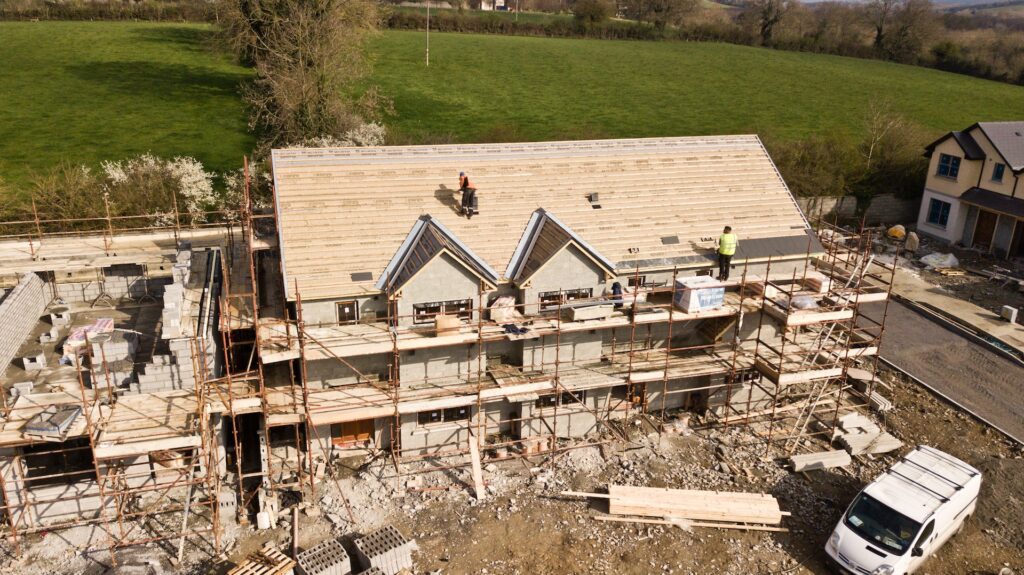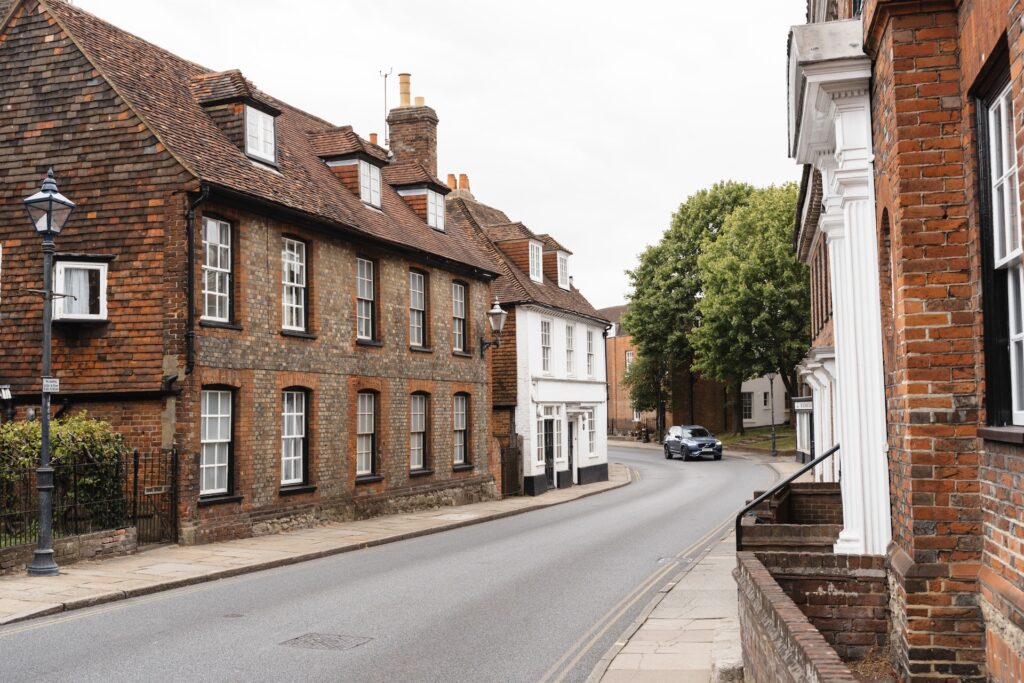What is Rural property
There are various types of properties that come under the banner of rural property. Mainly created through adding value or diversifying away from traditional farming setups. The various types of rural property provide very different characteristics and shown below in detail. It will provide deep insight to the merits of each type, and which compliments your income and diversification goals.

WHAT ARE RURAL PROPERTY INVESTMENT CHARACTERISTICS
Rural property has two main characteristics: firstly, its performance provides a low risk, safe long-term investment that has historically been countercyclical to economic downturns. This link to research carried out by Savills’ on global farmland shows the financial crisis of 2008 unaffected farmland values. Farmland actually performed very strongly in a time when most other asset classes were capitulating around it.
Moreover, land and buildings provide significant potential to add value. This is through planning gains and if achieved, it creates an instant spike in capital values and rental values. The large planning gains that drive asset appreciation would is development of land into residential or commercial buildings. Furthermore, changing the use of agricultural land to a solar farm, or a quarry creates significant capital and rental uplifts.
These planning gains provide the opportunity for rural investors to exit and monetise the gain they have created. On the other hand, hold the increased asset value and revenue streams. These irregular planning events provide the “home run” to a property subsector that provides lower, reliable, and countercyclical returns.
There is the potential to develop a hugely diverse range of assets within the rural property sector. Creating it yourself will take time and elements of luck to diversify a classically farmed estate into a hugely rural portfolio.
INSTITUTIONAL PERSPECTIVE OF RURAL PROPERTY
In 1871, the reported peak of Oxbridge College’s allocation to rural land, which was the combined total of 319,000 acres. This aided the story that you could ride between Oxford and Cambridge without leaving College-owned land. Moreover, that Trinity College, Cambridge, could inspect the College’s acres all the way from Cambridge to Dover.
Institutional land ownership is a combination of historic endowment gifts and strategic purchases. Strategic purchases are commonly in areas with potential planning gains or other such benefits. Endowments benefit from long-term horizons and can afford to wait for 50 or 100 years while development pressure builds.
WHAT ARE THE 8 DIFFERENT TYPES OF PROPERTIES WITHIN RURAL?
Rural property is a variety of asset types within the banner of rural:
1) Agricultural land
Used largely for food production in the form of crop or livestock production. If owner occupied, returns are largely reliant on commodity prices. If rented out, the yield is dependent on the lease type that governs the tenancy. The common yield for agricultural land is in the region of 1-2.5%. These holdings tend to have large agricultural buildings to help service the food production. Depending on local sentiment, holdings that surround towns or villages are prime for development into alternative uses.
2) Residential properties
Commonly consisting of a mixture of farmhouses and cottages. Historically, these residential properties would have served the farm workers. Most cottages are rented out separately now, as farming operations need less labour because of technology advances. These properties are commonly of an older age and are not conducive to modern energy efficiency ratings.
3) Non-prime commercial
These tend to be the result of successful changes in the use of agricultural buildings. This can range from storage lockups for things such as caravans and boat storage to workshops, studios, and conventional office space. Changing the use of these buildings from amenity support for agricultural operations to office space would significantly increase the revenue stream, reflecting a yield of approximately 6%–10% instead of 1%–2.5%.
4) Mineral extraction
With the ownership of land comes the ownership of what is below the land as well. Where planning permits are available and the right type of stone is available, mineral extraction from this rock can be a very lucrative operation. In most scenarios, a lease to a third party for the duration of the quarry’s life in granted for a fee per ton of stone extracted from the land. At the end of the quarry’s life, the land reverts to the landowner.
5) Renewables
Renewables can come in a few forms, such as solar, wind turbines, and battery storage. This depends significantly on the ability to achieve planning consent to change what would have been agricultural land to a renewable use. Achieving this planning change will have a significant impact on the income generated from that land. For example, rent for land used for agricultural purposes would be in the region of 100–150 per acre per annum, whereas achieving planning for a solar farm on the land would produce 700–1,000 per acre per annum. A worthwhile hike.
6) Diversification projects
Diversification projects come in many forms; the benefit of rural land is that you have space to be able to manufacture these opportunities. Diversification activities can range hugely from land and buildings for doggy day care, golf courses, festivals, farm shops, or using woodland/land for glamping activities. These are high yielding ventures, and if planning permits, these diversification projects provide attractive income compared to agricultural use. The deals are structured in various ways and is driven from the risk tolerance of the landowner. These structures can range from a conventional lease to a joint venture between the landowner and the service provider to the landowner running the venture personally.
7) Rights of way, wayleaves, and timber
These come in the form of ad hoc access deals commonly made with neighbours to have a right of way over your property. Depending on the situation and the negotiation leverage you have, these can be significant one-off payments or a very minimal token amount. Wayleaves are agreements with utility companies for specified activities on which you earn an income, although this is a very low source of income. Timber is a commodity, so price fluctuations are significant, and long-term planning is required to sustain continuous supply year after year.
8) Natural Capital
Natural capital is the world’s stock of natural resources, which includes geology, soils, air, water, and living organisms. Most natural capital assets provide the population with free goods and services called ecosystem services. This is an area that is developing rapidly in the rural sector due to the changes in the subsidy system post Brexit and the ever-growing importance of planning for a route to net zero. Government grants are available for the creation of natural capital. Furthermore, there are markets being developed on the back of policy changes for private sector funding as well. For example, in the planning system with biodiversity net gain requirements changing for developers.
THE DIVERSIFICATION ABILITies OF RURAL PROPERTY
A rural portfolio provides a variety of investment and diversification opportunities. Although, specialist knowledge is required when dealing with specific subsectors. This is due to specific nuances that a savvy investor needs to understand before committing. If done well, the ability to diversify within one property sector is immense, as the eight subsectors of rural property create different investment characteristics, which are as follows:
| Rural Sub-Sectors | Rural Sub Sector Characteristics and Growth Drivers | Yield |
|---|---|---|
| Agricultural | Property values and commodity values | Low |
| Residential | Property values | Medium |
| Non-prime commercial | Property values | Medium/High |
| Mineral extraction | Fixed-term: reliant on commodity values | High |
| Timber | Commodity values | Low |
| Renewables | Fixed long-term lease, reliant on energy generation | High |
| Right of ways/wayleaves | Fixed term into perpetuity | Low |
| Diversification projects | Dependent on structure: equity simulated returns | High |
| Natural capital | Commonly government-backed fixed income; development of private backed fixed income | Low |
As you can see, diversification generates income streams that are reliant on different factors than solely property prices. Furthermore, the development of long-term fixed income options generates bond like income guarantees to the portfolio. Furthermore, equity like returns are generated through planning sucesses, giving the possibility of high upside but high risk as well.
TAX ADVANTAGES OF INVESTING IN RURAL REAL ESTATE
Rural property and businesses provide inheritance tax advantages in relation to agricultural property relief (APR) and business property relief (BPR). Other tax advantages are on Stamp Duty Land Tax (SDLT), as buying rural land will likely qualify for mixed use SDLT, which is 0%–5%, instead of residential SDLT, which ranges from 0%–12%. The exact breakdown is shown in this link to HMRC SDLT. I’m aware of these options, although I’m no tax expert, so please take your own advice on these matters.
RURAL PROPERTY SUMMARY
Rural property as a sector provides consistent, countercyclical returns that have historically served as a protection against economic downturns for a portfolio. With its low initial yields, it’s not as exciting as other property sectors to most investors, although the ability to achieve planning gains to change the use of land and buildings away from their historical use is where the low risk, predictable investment is converted into life changing lump sums and/or higher yielding assets. When summarising the ability of the rural sector, if done well, it has the ability to create a well-rounded portfolio in itself that could perform in most markets.





